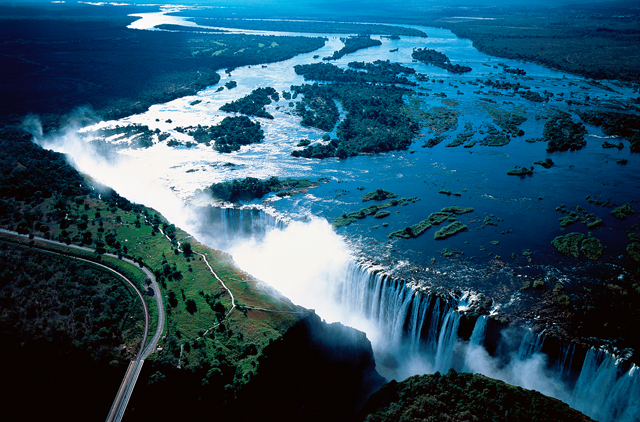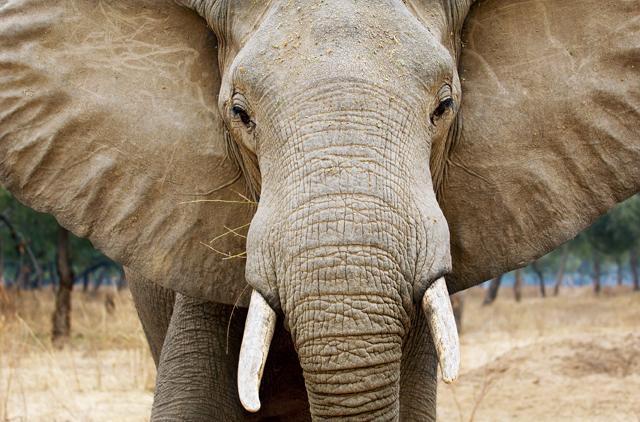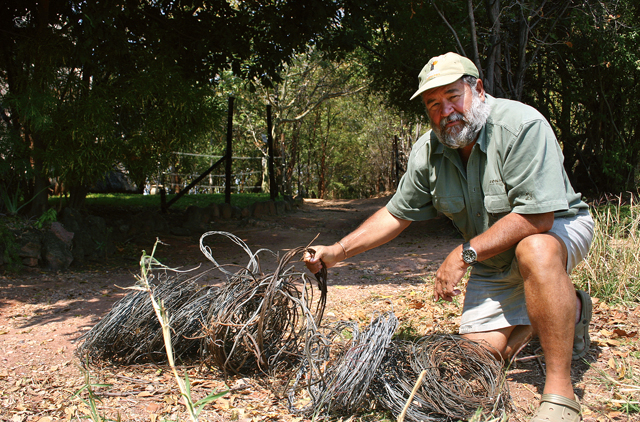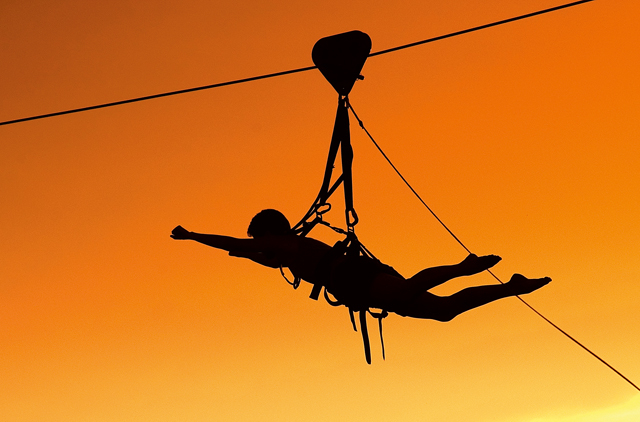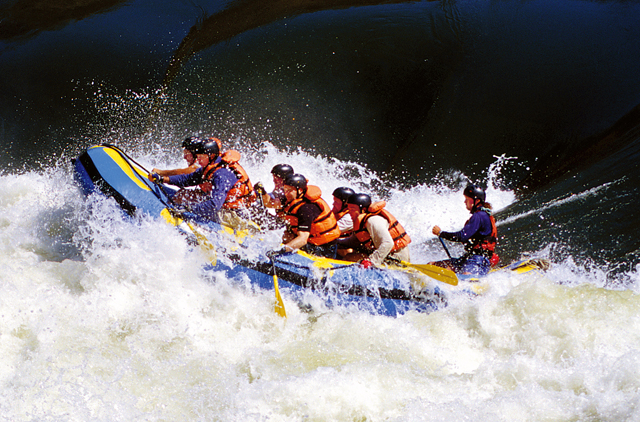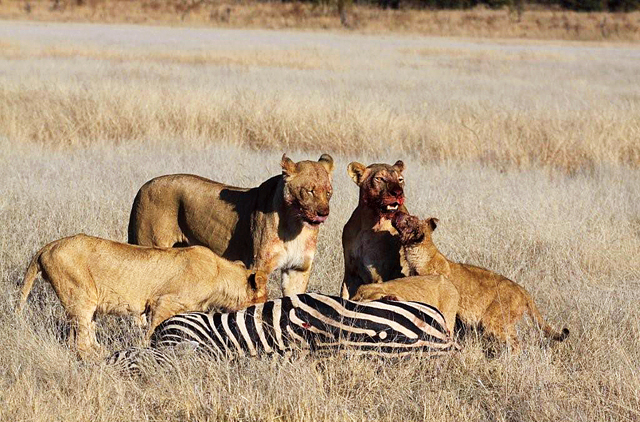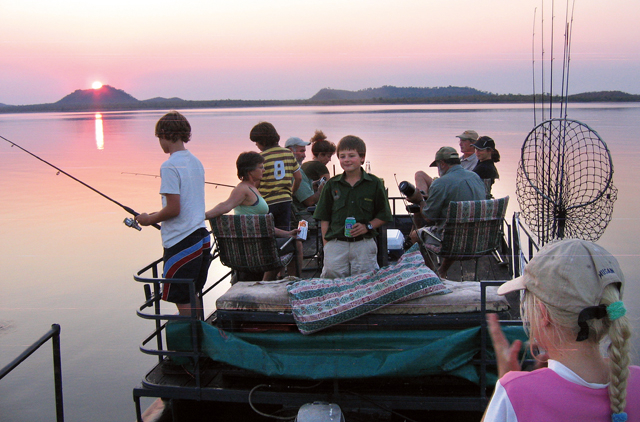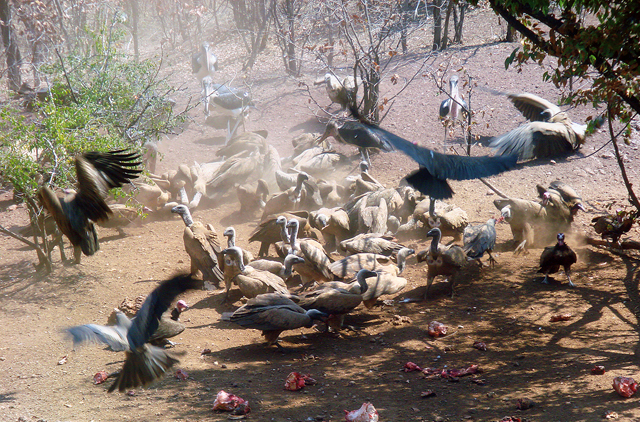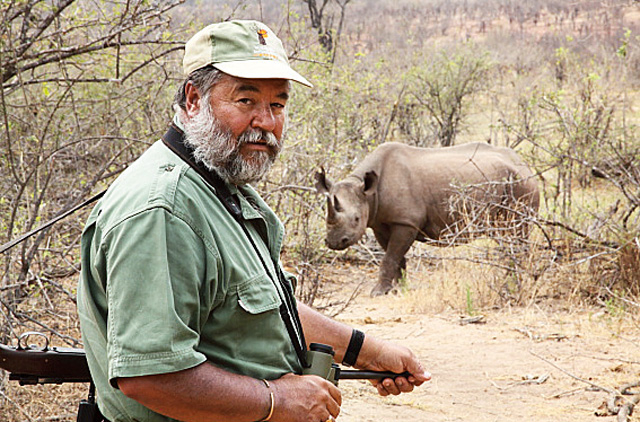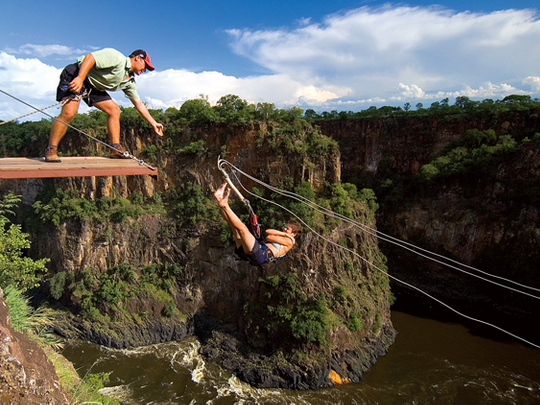
Talk about being on an emotional roller coaster. Nothing – not even Germany’s Silver Star or the Tower of Terror on the Australian Gold Coast – can produce so many contrasting emotions. White-water rafting on the Zambezi River, which separates Zimbabwe from Zambia, initiates a flood of them, from mortal terror to ultimate exhilaration.
Shooting rapids in low water from the base of the famous Victoria Falls in a rubber raft and bucking, twisting and bouncing through 18 swirling rapids in one of the wildest stretches of water in the world is not for sissies. And it’s unadvisable to ask the name of each rapid beforehand. The oarsman yells it soon enough: “We’re on the Gnashing Jaws of Death now!” He shouts cheerfully through the noise of a raging torrent.
Having just survived the Devil’s Toilet Bowl (or rapid number four) described by one tour operator as “a short rapid with a deceptively steep and powerful hole on entry followed by some nasty boils and whirlpools” your knuckles will undoubtedly be going white again. It’s an impossible river to tame, which is why adrenaline junkies keep coming back for more.
Shearwater has been distorting the faces of avid adventurers on its commercial white-water rafting trips since it started on this river in the Batoka Gorge in 1982. The kind of ride you get depends on the amount of rainfall, which affects the water level flowing over the rocks. The low-water season operates from July to mid-February, while the high-water season runs from mid-February to June, but on a different series of rapids.
Local tour operators Wild Horizons recommend those seeking “the wildest ride of their life” to get on the Zambezi in October or November when the river is at its lowest possible level. The Zambezi Safari and Travel Company, which has an informative website
(www.zambezi.com) giving unbiased advice on all African countries, warns to watch out for the short closed season around April/May. It also states that the British Canoe Union has classified this stretch of water as consisting of “extremely difficult, long and violent rapids, steep gradients, big drops and pressure areas”.
Let’s not beat about the bush, Zimbabwe has not received the best press in the past 12 years. It remains in a state of semi-confusion politically, but despite all, it is a safe destination of unspoilt, outstanding natural beauty. So too is Zambia. And both southern African countries seem to have a policy of keeping adventure seekers on their toes. If rafting doesn’t float your boat, there’s always bungee jumping headfirst off the Victoria Falls Bridge into the same roaring Zambezi 111 metres below.
In January this year, videos of a young Australian woman’s bungee jump were plastered all over the internet as she plunged into the river after the rope securing her feet broke. She lived to tell the incredible tale, suffering cuts and a broken collar bone. Despite operating this activity for 17 years and seeing close on 150,000 jumps without a single incident, this obviously didn’t do the Victoria Falls Bridge Company much good in terms of publicity, but in retrospect safety is now even more watertight than before as the company has reviewed every component of its operation.
The activity here is as safe as at any bungee jumping facility anywhere in the world, that is, for those over 14 years old and weighing more than 40 kilograms. The Zambezi River flows over a 1,700-metre-wide lip creating the Victoria Falls, known locally as Mosi-oa-Tunya, “the smoke that thunders”. Listening to the incessant roar and watching the misty spray that billows up from the impact of the world’s largest sheet of falling water, you can see what they mean.
Scottish explorer Dr David Livingstone was the first European to discover the falls in 1855, and named them after the reigning Queen Victoria. I wonder if he would have approved of the high-wire action going on in the very same gorge today. The ‘Flying Fox’ is a fine example of unleashed freedom, where clients take a running jump over the cliff and soar horizontally above the Batoka Gorge 120 metres below. The Zip Line and Gorge Swing are variations of this theme, where the rush of wind in the ears while zooming past panoramic views of cliff and gorge is pretty spectacular.
Wild Horizons recognises that some punters may be a little concerned about the strength of the cables, for on its website there’s interesting small print. “The cables supporting the products at the high wire are rated to hold a weight of 22,700kg each. That is the weight of five bull elephants (4,000kg each) or both of our 40-seater buses (11,000kg each). They should manage a few people!”
Above the falls on Africa’s fourth-largest river are guided canoe and kayaking safaris, considered safe (within the confines of Africa of course) if one respects the river’s main inhabitants – hippopotamuses and crocodiles – and gives way when it’s due. Not knowing the traditional footpaths hippos take at night to graze onshore, going with a licensed and experienced guide is a must.
Exhibitionists will thrive in the naturally formed Victoria Falls Devil’s Swimming Pool on the Zambian side of the upper river. Here on the very lip of the mighty falls, visitors to the Tongabezi Safari Lodge get to leap into and swim in the bubbling flowing water and peer over the edge just before the cascading water plunges 108 metres into the chasm.
Back on Zimbabwean soil, other activities such as elephant-back safaris offer a game-viewing experience from a different perspective. While some visitors might not like the idea of walking with lions that traditionally prefer to eat such easy prey for dinner, these are becoming popular among visitors to the Victoria Falls area, and not just for the photographic opportunities.
It’s also because some of the lion-walk companies, such as Lion Encounter, are involved in programmes to preserve the species in tandem with the African Lion and Environmental Research Trust (Alert), so, in effect, you are contributing to wildlife conservation. Anyone healthy, over 15 years old and at least 1.5 metres tall can participate, but remember – these are wild animals and they lick their lips when anyone struggles to walk because of an injury. Natural instinct always overrides.
For an off-the-beaten track, all-round African experience there are few that beat a Steve Edwards safari. His tented Musango Safari Camp on a private island in Lake Kariba – some two-and-a-half hours away from the Falls by light aircraft – offers electricity by generator, negligible mobile phone reception or internet, and access is only by boat (Lake Kariba is a 5,200-square-kilometre man-made lake).
On walking safaris he leads guests into untrodden areas of the nearby Matusadona National Park. Edwards’ stories about the idiosyncrasies of wildlife, geology, astronomy and even fossils is fascinating, fun and a huge advantage when wanting to get close – but not too close – to nature. Walking in the wild is what Africa is all about – it’s what gets all the juices flowing. This is Ernest Hemingway’s True at First Light but shooting with a camera; this is Karen Blixen’s Out of Africa, but in Zimbabwe.
Edwards is also part of an anti-poaching team. Disappointingly, poaching is escalating – the locals are hungry, the animals are free. Balancing the two conflicts of interest is not easy, but through education, the country’s wildlife could be everyone’s greatest asset. Zimbabwe’s tourism industry declined dramatically in 2000, when the government introduced a land-reform policy evicting commercial farmers from their land. This led to countrywide instability and crippling inflation.
Adoption of the US dollar in 2009 as the official currency brought back relative stability, along with the formation of a coalition government between the opposition Movement for Democratic Change and the ruling party of Robert Mugabe.


